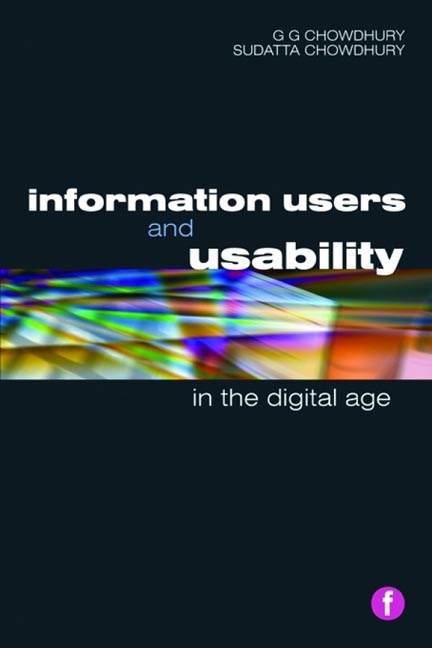Book contents
- Frontmatter
- Contents
- Preface
- Figures and tables
- 1 Introduction
- 2 Information needs and user studies
- 3 Human information behaviour studies and models
- 4 Usability study basics
- 5 Usability study participants
- 6 Usability data analysis
- 7 Web usability
- 8 The usability of digital libraries
- 9 The digital divide, digital natives and usability
- 10 Issues and trends in usability research
- Index
6 - Usability data analysis
Published online by Cambridge University Press: 09 June 2018
- Frontmatter
- Contents
- Preface
- Figures and tables
- 1 Introduction
- 2 Information needs and user studies
- 3 Human information behaviour studies and models
- 4 Usability study basics
- 5 Usability study participants
- 6 Usability data analysis
- 7 Web usability
- 8 The usability of digital libraries
- 9 The digital divide, digital natives and usability
- 10 Issues and trends in usability research
- Index
Summary
Introduction
Usability studies, in the words of Rohrer (2008), are ‘blessed (or cursed) with a very wide range of research methods, ranging from tried‑and‑true methods such as lab‑based usability studies to those that have been more recently developed, such as desirability studies (to measure aesthetic appeal)’. Indeed, as discussed in Chapter 4, a usability researcher can adopt a variety of approaches and methods for conducting usability research. Irrespective of the study approach – quantitative or qualitative – usability research often generates a large volume and variety of data that needs to be analysed and interpreted appropriately in order to produce useful results and draw appropriate conclusions. If a quantitative approach is adopted, one or more appropriate statistical methods have to be used in order to analyse the data.
Quantitative data can be presented in a variety of ways using tables, charts and so on. Such simple data analysis and presentation techniques provide descriptive statistics as the study findings, but in most statistical studies it is expected that results can be generalized for the entire study population and inferences can be drawn. In doing so, it is also important that the findings are taken with some degrees of confidence, the most common one being a 95% confidence level – the findings can be true for 95% of cases. Depending on its nature and design a usability study may involve a number of data variables that may be independent or dependent on one another, and the data variable may have different characteristics that need to be analysed and interpreted according to appropriate statistical techniques. Consequently, one or more statistical methods need to be used in order to analyse and interpret statistical data properly.
In summary, a usability researcher needs to know at least some of the basic statistical techniques and measures in order to complete a usability study successfully and generate results that can be taken with confidence and generalized appropriately. Again, in addition to employing quantitative analysis techniques, in order to generate statistical data, a usability researcher may also employ some qualitative analysis techniques in order to conduct some in‑depth analysis and gather data on specific features and functionalities – for example user preferences and the reasons behind them – of an information product or service.
Information
- Type
- Chapter
- Information
- Information Users and Usability in the Digital Age , pp. 123 - 140Publisher: FacetPrint publication year: 2011
